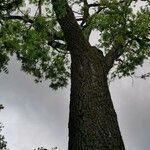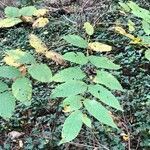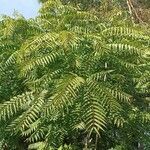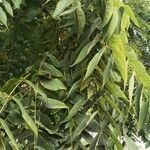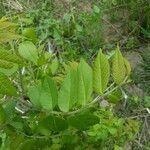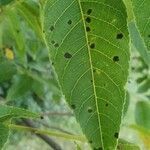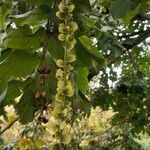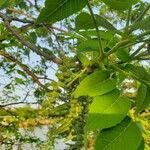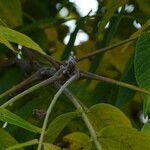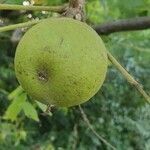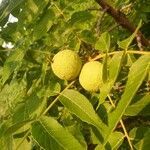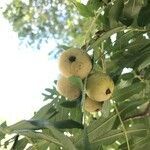A tall deciduous tree. It grows up to 30 m high. It has a large crown. The trunk can be 120 cm across. The trunk is straight and the crown open. The leaves are alternate and there are 14-22 leaflets then a leaflet at the end. The end leaflet is often small. The leaves are 20-60 cm long. They are yellowish-green above and slightly hairy underneath. The flowers are separately male and female. The male pollen flowers are in catkins 5-10 cm long. The seed flowers are in erect clusters of 1-4. The husk is slightly hairy. The fruit are round and 4-6 cm across. They occur in drooping clusters of 1-3. The kernel has deep grooves. It is strongly flavoured and oily.
Tree to 40 m; bark nearly black, with rough ridges; pith rather light brown; upper margin of lf-scars glabrous; lfls 11–23, oblong-ovate, acuminate; stellate hairs few or none; fr subglobose, not pointed, 5–8 cm thick; nut commonly subglobose and slightly flattened, very rough, rather distinctly 2-valved. Rich, moist soil; Vt. to Minn. and S.D., s. to Ga., the Fla. panhandle, and Tex. (Wallia n.)
